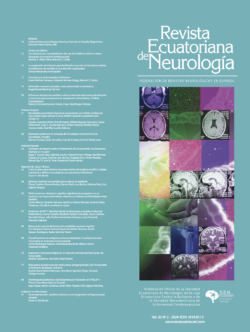Using neuropsychological tests that have normative data from the population in which they are being applied has positive effects on the accuracy and validity of the diagnoses, which can influence the effectiveness of the interventions derived from them. In addition, it provides greater precision in the studies that use such tests. In Ecuador, there are no studies on the use of standardized tests, which is why the objective of this study was to identify the neuropsychological tests for children and adolescents that have been adapted, standardized and/or validated in Ecuador. A systematic review was conducted using the PRISMA model. There are 10 tests with normative data for the Ecuadorian population: Wisconsin Card Sorting Test Modified Version, Trail Making Test, Color and Word Test: STROOP, Peabody Picture Vocabulary Test, Symbol and Digit Test SDMT, Rey Complex Figure – Osterrieth, Learning and Verbal Memory Test (TAMV-I), Concentration Endurance Test (d2), Verbal Fluency Test and Token Test. The instruments allow the evaluation of 17 cognitive functions. Based on the results, it is recommended that the country’s professionals choose to use these tests and their Ecuadorian scales.
scale
Validación de Diferentes Escalas en la Evaluación del Pronóstico de Pacientes con Hemorragia Subaracnoidea Espontánea en el Hospital Regional “Dr. Teodoro Maldonado Carbo” entre Mayo-2011 y Mayo-2014
Background: Subarachnoid Hemorrhage (SAH) is associated with a high mortality rate and functional consequences. Several scales have been created in order to assess prognosis after SAH, and even though they have been widely studied, neither has achieved universal acceptance.
Objective: Validate different scales assessing the prognosis of patients with spontaneous SAH in a local hospital population.
Methods: A retrospective, cross-sectional study was conducted on patients admitted to the “Dr. Teodoro Maldonado Carbo” Hospital, diagnosed with spontaneous SAH, between 18 and 75 years. Descriptive statistics and Spearman correlation coefficient were calculated in order to evaluate the association of the Hunt and Hess, WFNS and Fisher Scales with functional outcome.
Results: Hunt and Hess Scale had a higher correlation (60,3%; p=0,000) with the functional outcome at discharge or death, compared to 55,3% (p=0,000) obtained by the World Federation of Neurological Surgeons Scale and 50% (p=0,000) by Fisher Scale. In addition, the Glasgow Coma Scale score (-58,4%; p=0,000), altered pupillary response (54,7%; p=0,000) and the need for invasive mechanical ventilation (73,8%; p=0,000) were factors associated with functional score.
Conclusion: Hunt and Hess Scale revealed a good correlation with the Rankin functional scale at discharge or death, and is superior to the other scales in evaluating the prognosis of patients with spontaneous subarachnoid hemorrhage.





